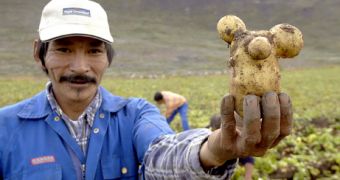Vikings named this land Greenland only for 'promotional' goals, as it was mostly a frozen land. Rapid thawing on the world's biggest island has started to improve conditions for agriculture, commercial fishing, mining and oil exploration. Arctic temperatures experience the most dramatic rise with the global warming.
"The warmer climate will have a definite positive effect on Greenland's economic possibilities and development," states a new WWF Denmark report investigating the effects of climate change on the life on Greenland, a self-governing territory of Denmark. In southwestern Greenland, the grass-growing season increases annually, rising productivity for about 60 local sheep farms, producing 23,500 carcasses of sheep and lambs each year. Recently reintroduced dairy cattle could deliver up to 29,058 gallons (110,000 liters) of milk annually. Vikings introduced livestock on the island in the 10th century, but a mini Ice Age in the 13th-14th century ended their story in Greenland.
Now you can eat Greenland grown potatoes, broccoli and other vegetables one has never dreamed of seeing them grow in the frozen island. A boost of cod and halibut catches are expected by the commercial fisheries, as the fish recently advanced north into Greenland's waters and are increasing in size.
"The cod there at the moment are still small ... so they haven't really become a commercial opportunity yet," said Anne-Marie Bjerg, Arctic conservation officer for WWF Denmark.
"But they will undoubtedly [grow in size and commercial importance], particularly if the cod stocks are properly managed," she said.
The melting ice cap has unveiled a terrain for searching diamonds, gold and other metals. Oil companies have already achieved rights to explore oil and natural gas along the island's shores. Greenland could also claim its Arctic seafloor (with corresponding oil) share.
The new income coming from oil, mining and cheap hydroelectricity delivered by abundant meltwater could make Greenland independent from Denmark, by which for the moment is heavily funded. And this could occur much sooner than predicted.
But "In northern Greenland traditional Inuit culture is increasingly under threat from global warming," said Lene Kielsen Holm, sustainable development advisor for the Greenland arm of the Inuit Circumpolar Council in Nuuk.
The sea ice raft employed by Inuit to hunt seals and walruses is forming later each year and already melting two months earlier than two decades ago.
"The warming of the ocean is making the ice so thin that people living from hunting are not able to follow the routes that they used to. They are seeing more and more accidents. In the Qaanaaq region of northwestern Greenland this year, hunters lost their gear and sled dogs as abrupt storms broke up the thin sea ice. If they can't go hunting, they can't feed their dogs," said Holm.
The economic boom could also change the Inuit (Eskimo) nature of the Greenland.
"With a population of only 57,000, Greenland doesn't have the infrastructure needed by multinational oil and mining companies, which could soon start operating on the island. Foreigners would have to be invited to come here, and maybe in the near future we could be in the situation of being the minority in our own country. Global warming's impact on sea ice and ocean currents are also altering the distribution of animals that the Inuit hunt," said Holm.
Ringed seals, once common throughout Greenland, are retreating farther north.
A new research made by Denmark's National Environment Research Institute at the University of Aarhus revealed that the wildlife of Greenland's high Arctic start the summer activities up to a month earlier than 10 years ago. "The average dates for plants flowering, insects emerging, and bird eggs hatching have advanced by 14.5 days," wrote the researchers.
"Greenland's symbolic polar bear is being forced to narrow its range in response to climate change. Within the next 50 years the polar bear will probably only be found in the very northwest corner of Greenland." has signaled a report of WWF.

 14 DAY TRIAL //
14 DAY TRIAL //